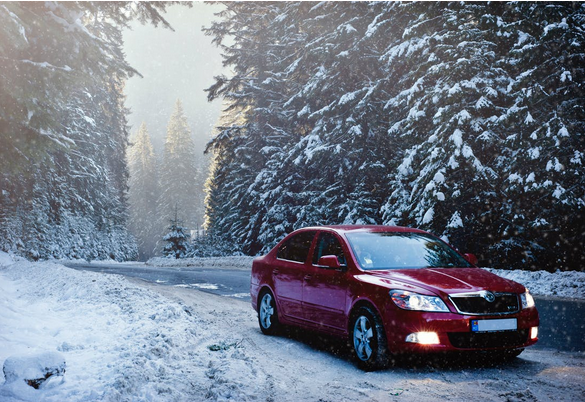Here Are Some Of The Most Common Contaminants Your Car Encounters During The Winter

Winter can be a challenging time for your car, as it is exposed to a variety of contaminants that can affect its appearance and performance. From road salt to ice melt chemicals and winter grime, your vehicle faces numerous threats during the colder months. It’s essential to understand the impact of these contaminants and take the necessary steps to protect your car, such as buying the right car cleaning products or implementing a regular cleaning and maintenance schedule.
Road salt
Road salt is a common sight during the winter months, used to melt ice and snow on road surfaces for safer driving conditions. However, while it’s effective for roads, it can have detrimental effects on your car. As you drive, the salt can be kicked up onto your vehicle, leading to corrosion and rust on the metal components. The undercarriage of your car is particularly susceptible to salt damage, as it can accumulate in hard-to-reach areas, accelerating the corrosion process.
To protect your car from road salt, regular cleaning is essential. Using a pressure washer or visiting a car wash that offers an undercarriage wash can help remove salt buildup. Additionally, applying a protective wax or sealant to your vehicle’s exterior can create a barrier against salt and moisture, reducing the risk of corrosion. It’s also important to pay attention to your car’s undercarriage and wheel wells, as these areas are most exposed to road salt.
Ice melt chemicals
In addition to road salt, ice melt chemicals are another concern for car owners during the winter. These chemicals, such as calcium chloride and magnesium chloride, are commonly used to de-ice driveways, sidewalks, and parking lots. However, when these substances come into contact with your car, they can cause corrosion and damage to the metal and paint.
To protect your car from ice melt chemicals, it’s important to promptly remove any residue that accumulates on your vehicle. Regularly washing your car and paying attention to the areas where ice melt chemicals may collect can help mitigate their effects. Additionally, applying a layer of protective coating, such as car wax, to your car’s exterior can create a barrier against these corrosive substances, reducing the risk of damage. When parking your car, try to avoid areas where ice melt chemicals are heavily used, such as near the entrances and exits of buildings.
Winter grime and dirt buildup
During the winter, your car is exposed to a build-up of grime, dirt, and other contaminants from the road. This accumulation can not only make your car appear dirty but also pose potential risks to its exterior and undercarriage. The combination of mud, snow, and road debris can lead to corrosion, paint damage, and blockages in essential components of your vehicle.
Regular washing and cleaning of your car are essential for removing winter grime and dirt buildup. Using a gentle car shampoo and a microfiber wash mitt can help lift and remove contaminants without damaging your car’s paint. Pay particular attention to the areas around the wheels, undercarriage, and lower panels, as these are more prone to accumulating dirt and grime.
Protecting your car from winter contaminants
To protect your car from the various contaminants it might encounter during the winter, it can be helpful to buy cleaning products that are designed for cars and vehicles. Look for car shampoos and washes specifically designed for winter conditions, as they are formulated to effectively remove road salt, ice melt chemicals, and winter grime without harming your car’s finish.
In addition to cleaning, applying a quality wax or sealant to your car’s exterior can provide a protective layer that repels contaminants and enhances the durability of your vehicle’s paint. Look for products that offer long-lasting protection and resistance to winter-specific hazards.
Regular maintenance and inspection of your car are also important for identifying and addressing any signs of damage or corrosion caused by winter contaminants. Checking your vehicle’s undercarriage, wheel wells, and exterior for salt residue, chemical buildup, and dirt accumulation can help you take proactive measures to protect your car from the effects of winter conditions.
Final thoughts
As you prepare for the winter season, it’s important to be mindful of the potential contaminants that can affect your car. Road salt, ice melt chemicals, and winter grime can all pose risks to your vehicle’s condition and performance if left unchecked.
Remember, taking care of your car during the winter doesn’t just maintain its appearance; it also preserves its value and longevity. With the right approach, you can confidently navigate the challenges of winter while keeping your car looking and performing at its best.






